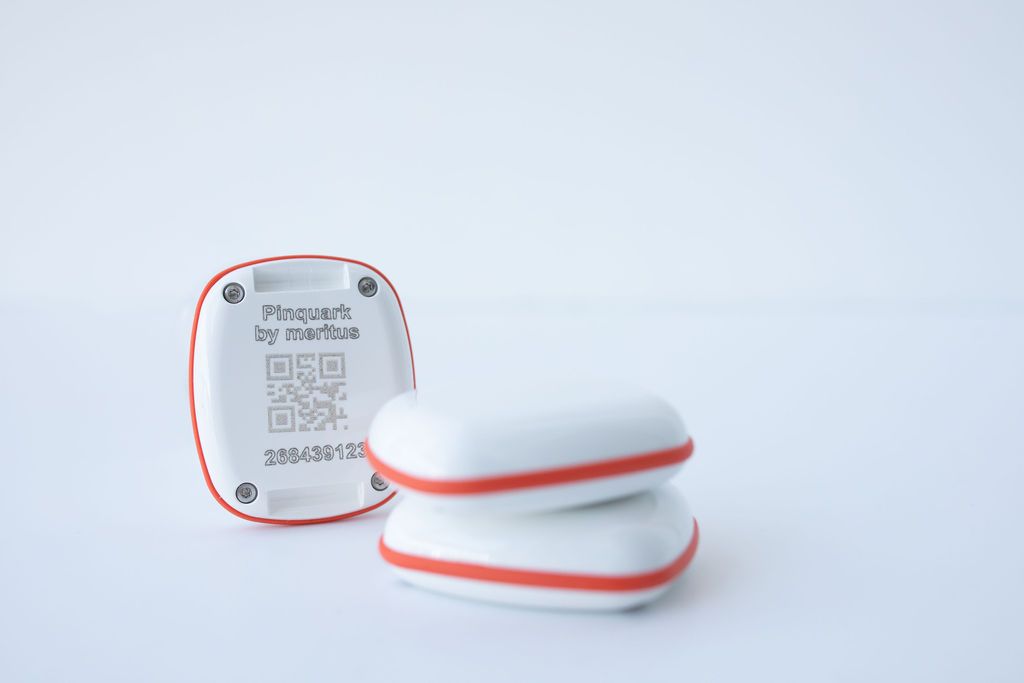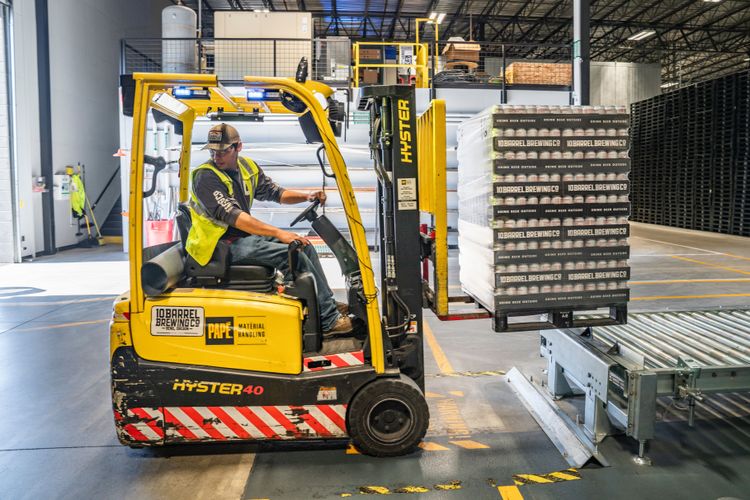close
optimize
UWB PINQUARK sensors in a smart warehouse
18 August, 2022
edited on: 8 September, 2022
Modern technologies based on artificial intelligence and the Internet of Things are changing the modern warehouse industry. In order to stay ahead of the competition, warehouse companies must implement technologies that will allow them to adapt to market changes and respond to customer expectations. One such innovation is a UWB sensor. Thanks to their use, companies can, e.g. significantly increase the productivity, efficiency and accuracy of warehouse processes. Learn more about the precise, fast and reliable UWB sensors used by the intelligent WMS PINQUARK system and learn about the benefits of implementing ultra-wideband technology (UWB) in your warehouse.
What is the UWB technology?
The operation of the ultra-wideband (UWB) technology is based on short-range radio waves (RF). They are used for wireless communication, which can be applied in a warehouse to detect, among others, location of warehouse workers, devices or goods and ensure safe data transmission. Like other communication protocols (including Bluetooth), UWB technology can be used to transfer data between devices via radio waves. It does this with short nanosecond pulses over an ultra-wide frequency range. UWB technology uses billions of radio pulses that are sent every few nanoseconds as a pattern over a wide spectrum of frequencies. These signals are sent from UWB sensors to receivers. Receivers analyze the incoming pattern and translate it into data. Currently, many technology companies use the possibilities of the UWB technology, including the largest companies producing smartphones and cars. Among them there are also IT companies that create innovative solutions for the logistics industry
Precise detection of warehouse staff locations
The technology by which UWB PINQUARK sensors can precisely determine the location of e.g. a warehouse worker (with an accuracy of less than 10 centimeters) in real time is the measurement of distance using the time of flight (ToF) method. It accurately measures the time between transmitting a signal and receiving feedback in order to estimate the distance and calculate the position of the device. Due to its very high resistance to interference, UWB is perfect for difficult production conditions. The UWB PINQUARK positioning system uses three devices:
UWB tags. They are worn by warehouse workers (e.g. in the form of a watch, on a lanyard or attached to belts) or mounted on tracked objects, e.g. robots or warehouse vehicles. Small devices transmit radio signals at certain intervals. They can also be equipped with data interfaces and transmit location details directly to the PINQUARK system.
UWB anchors, i.e. the so-called goals. They are reference points that are permanently placed in the warehouse and are used to locate people or vehicles in real time with accuracy measured in centimeters. They record the signals sent by the UWB tag and give them a fixed location stamp. The position data is combined and sent to the localization server.
Location manager, or RTLS server. It is the software that calculates the locations of individual markers in real time. The marker signals are grouped by gateways and received by the location manager. The calculated location is then transferred to the PINQUARK system.

Digital spaghetti diagrams and heat maps
UWB sensors used by the PINQUARK system automatically create the so-called digital spaghetti diagrams. They are very accurate and make it possible to recreate the movement of employees or vehicles in the warehouse in the form of animations.
Another key tool provided by UWB PINQUARK sensors is the so-called heatmaps. They enable the visualization of a large number of localization points in one image for any large set of resources. Heatmaps show both movement and intensity using a color-based scale - e.g. where digital spaghetti charts show an unreadable swirl of lines, heatmaps show a distinct red color.
Benefits of using digital spaghetti diagrams and heat maps
ability to monitor resources in real time - quick identificationin in which parts of the warehouse employees or vehicles stay the longest. Thanks to this, you can check whether the warehouse workers are working according to the plan and increase the efficiency of warehouse processes;
obtaining reliable information on the actual use of resources in the warehouse and their activity, e.g. identification of areas where forklifts are most often used and zones with the highest labor consumption. It is a helpful tool to identify process imperfections and increase warehouse efficiency;
easy identification of the frequency of employees departing from workstations;
increased work safety and reduced risk of accidents at work - identification of main communication routes and potentially dangerous places resulting from increased traffic or crossing routes;
access to very accurate data that enable the identification and implementation of improvements in the warehouse in such areas as: warehouse servicing costs, rental / purchase of warehouse vehicles, increased efficiency and better use of warehouse space or allocation of employees to individual tasks.
UWB and pandemic safety
UWB sensors enable accurate recording of employee location data. This enables insight into whether employees obey the principles of social distancing and enables very accurate tracking of interactions with other employees. For example, if warehouse workers tested positive for COVID-19 or other infectious diseases, the areas and people they came into contact with can be closely monitored to prevent further spread of the disease in the workplace.
Increasing the efficiency of work in a warehouse requires constant control of processes and activities undertaken by warehouse workers. No human being is able to be in many places at once, especially in a warehouse environment which requires, among others continuous supervision of work safety and all employees, developing optimal vehicle routes and order picking paths as well as asset tracking. The answer to this challenge are UWB sensors and the intelligent WMS PINQUARK system, offering invaluable insights into the operation of the entire warehouse.
reading time
5minutes
contact
Address
Meritus S. A., based in Warsaw,,
ul. Prosta 70, 00-838, Warsaw
NIP: 5273148508
REGON: 540723424
KRS: 0001151166
Equity in the amount of 100,000 PLN
E: office@pinquark.comul. Prosta 70, 00-838, Warsaw
NIP: 5273148508
REGON: 540723424
KRS: 0001151166
Equity in the amount of 100,000 PLN
follow us
contact us
Get in touch
We care about your feddback. Please contact us when you need.


